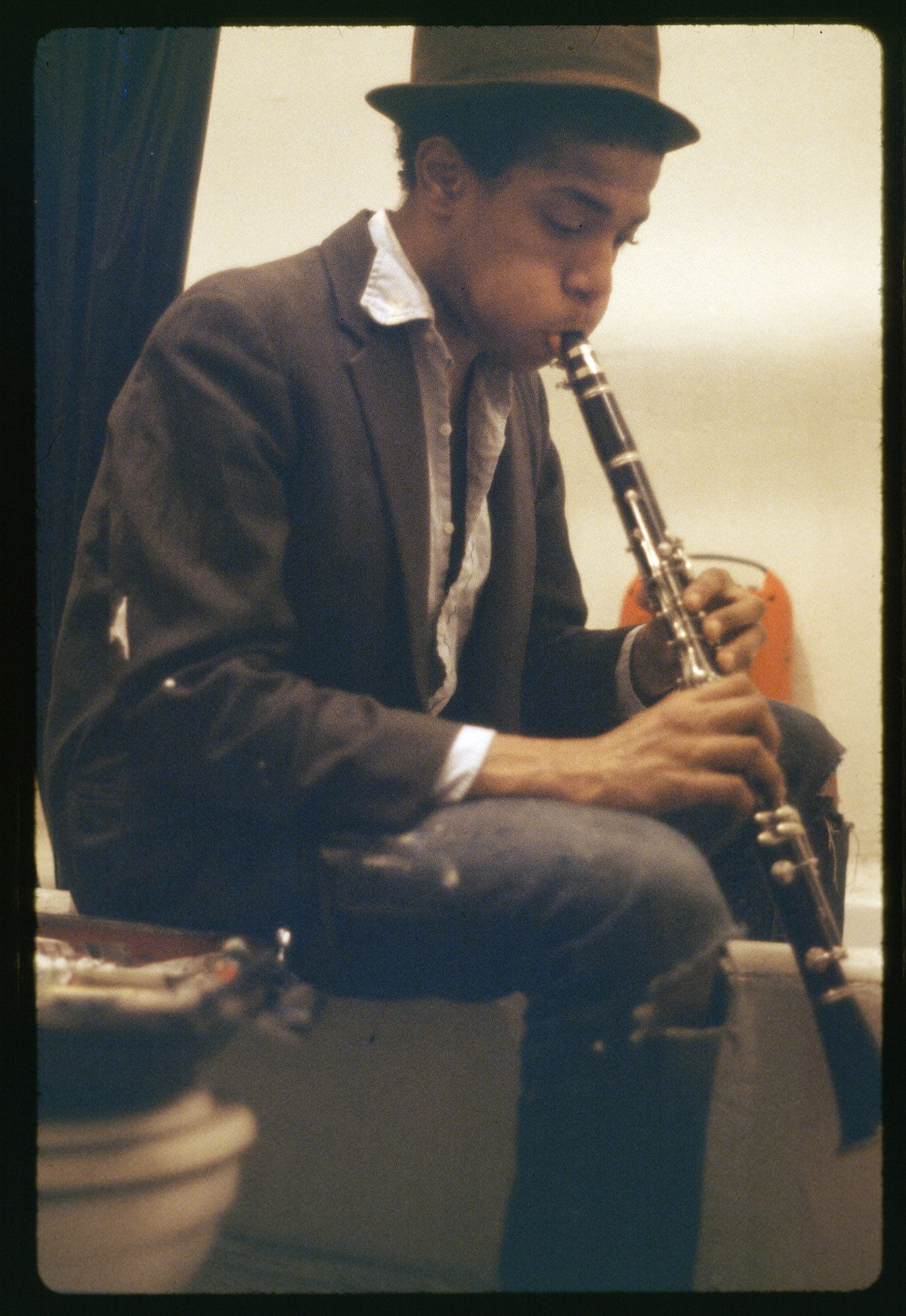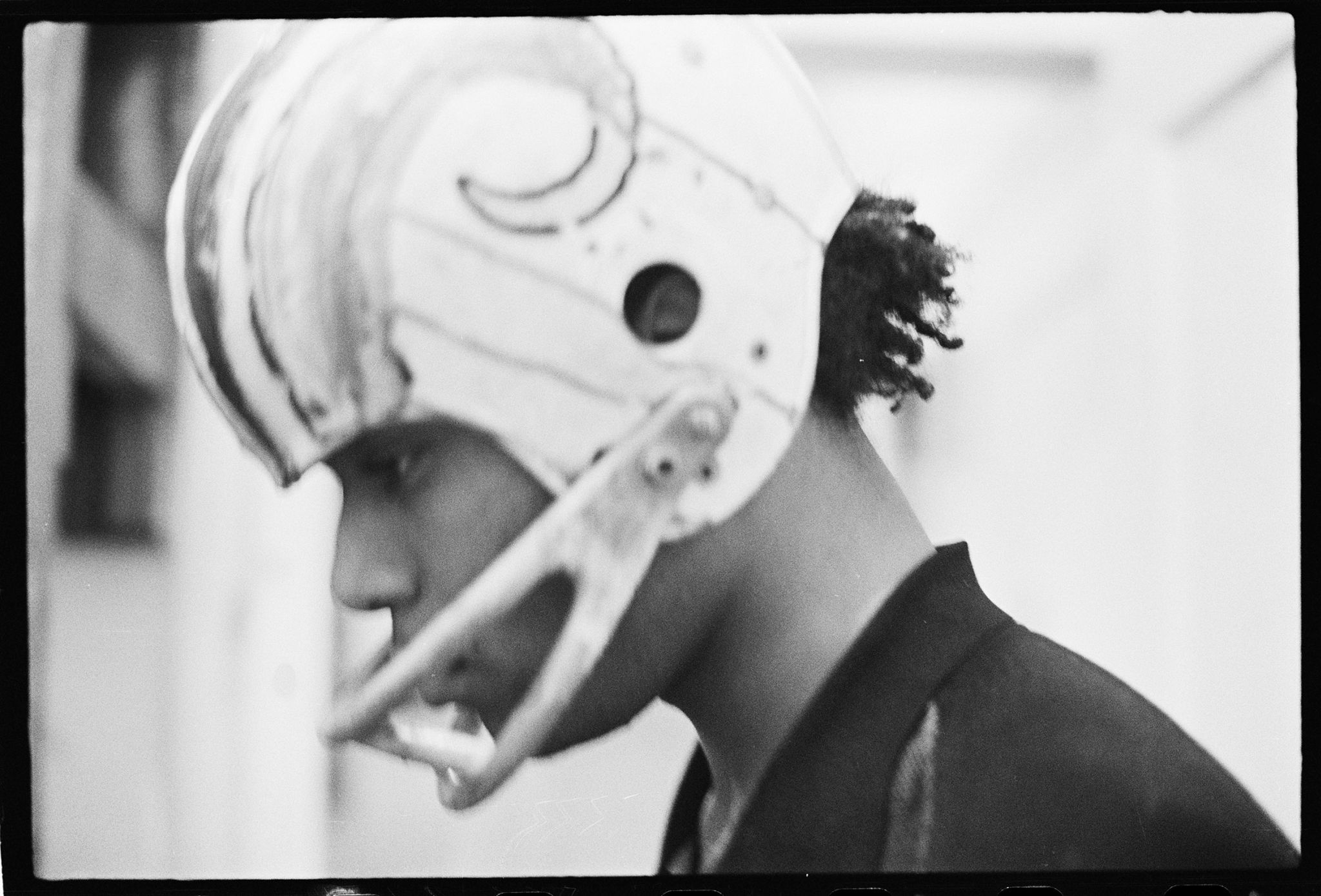Basquiat is a hyperactive sponge. He studies Picasso’s reproductions but also cartoons and Adler’s chemistry books. He plays the clarinet and designs costumes. The art that it yields has not yet solidified in a specific form. He makes many performances that are photographed by Adler. He is sitting on his own with an American football helmet in front of an open fridge with a TV that shows images of former President Eisenhower: a spell of the Cold War that in those days threatens to derail in a Third World War. The small apartment in the East Village is a safe hiding place, a meeting place for kindred spirits and a pressure cooker for Basquiat’s talent. Here he writes for the first time on a door “famous negro athletes”, a phrase that runs through his later work as a common thread. But he also paints the three-pointed crown, the heart from which a cross grows, and the simplified car between brackets, which grow into iconic symbols in Basquiat’s imagery.



